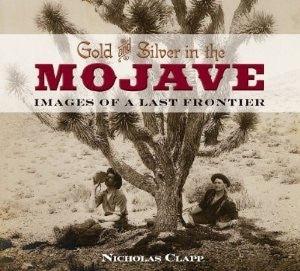
Gold and Silver in the Mojave - Images of a Last Frontier
It is widely held that the Old West, wild and wooly, ceased to exist by 1890, when the U.S. Census concluded: There can hardly be said to be a frontier line. But there was: an irregular line looping through eastern California and Nevada, and encompassing the better part of the Mojave Desert. It was there that in 1895, a hapless prospector idly hammered a rock from an outcrop. It was filigreed with gold. A rush was on... to Randsburg in 1898, then to Tonopah in 1902, to Goldfield in 1904, to Rhyolite in 1906, and ultimately into the shimmering sink of Death Valley. Wonder camps were thronged with builders and wreckers, tradesmen and vultures, miners, cooks, gamblers and more gamblers, whores galore, what-have-you...And photographers. They were little-known and uncelebrated, yet they captured a series of extraordinary images of what was to become a final, go-for-broke chapter in the story of the American West. The Mojave's latter-day photographers were quick to take advantage of turn-of-the century technical advances. Candid shots were possible with hand-held cameras and fast film; 180° panoramas did justice to the desert s sweep. Life was documented above and below ground, in searing heat and snowstorms, in good times and bad. Remarkable images probed the souls of nobodies and nabobs, and in their eyes recorded hope for a better life... crushing loneliness... the glint of greed. All this and more will be explored in Gold & Silver in the Mojave, an intensively-researched pictorial. Its nearly three-hundred images will bring to life and celebrate a grand curtain call for the Old West. By 1912, the ore was all but exhausted, and the boom times were over. The Mojave s camps fell to ruin, forsaken but for their images. They're with us today... at once lively and haunting. Nicholas Clapp, 2013, 188 pages, softcover